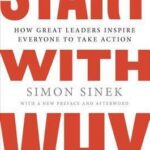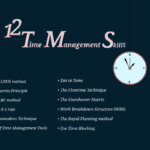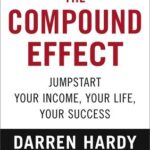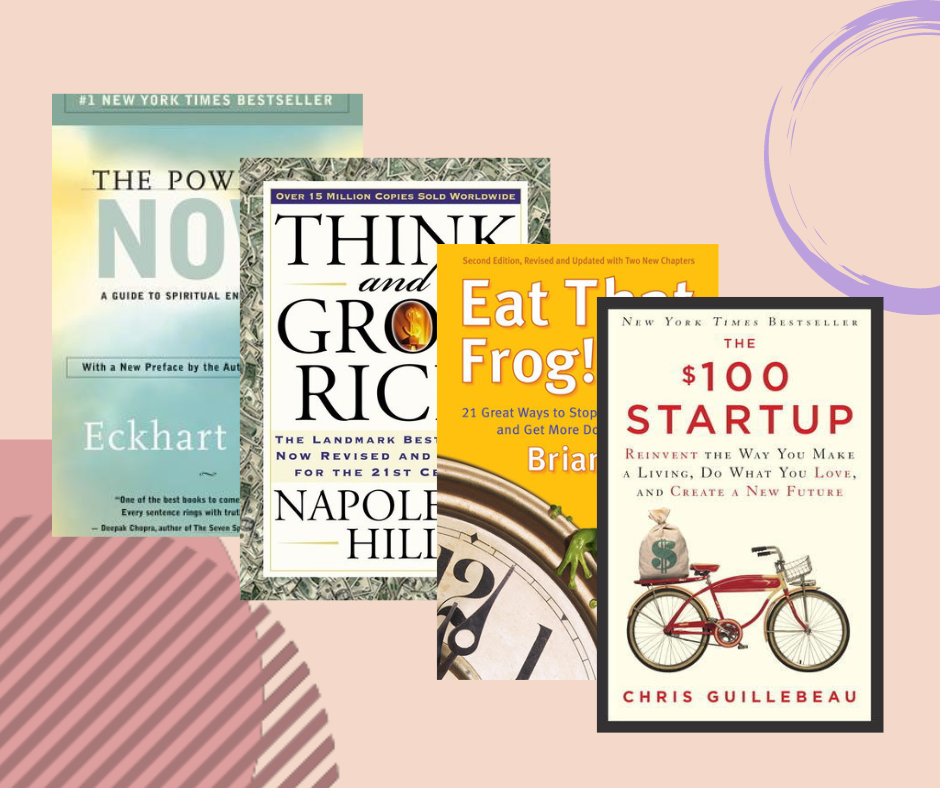#1 Permission Marketing: Turning Strangers into Friends and Friends into Customers by Seth Godin
In his book “Permission Marketing,” Seth Godin presents the idea of marketing that relies on getting a customer’s consent to hear from you. By providing clients with pertinent content and offers, he places an emphasis on developing trust and long-term connections.
Key Ideas:
- Customers must give their explicit approval to receive marketing messages in order for permission-based marketing to take place.
- Permission marketing’s foundation is built on relationships with customers and trust.
- Marketing to those who have provided permission is more successful since they are more responsive to your communications.
- The book exhorts companies to offer worthwhile and pertinent material in order to keep customers’ trust.
- Segmenting audiences and tailoring messaging to specific tastes are key components of effective permission marketing.
#2 Contagious: Why Things Catch On by Jonah Berger
Jonah Berger investigates the reasons why some concepts, items, or pieces of content become popular and are spread widely. He explains the psychology of why people share things and identifies six essential characteristics that propel virality.
Key Ideas:
- Social Currency, Triggers, Emotion, Public, Practical Value, and Stories (STEPPS) are the six virality principles.
- For marketing messages to spread like wildfire, it’s imperative to comprehend why people share.
- Particularly, stories have a big impact on how quickly content spreads online.
- Word-of-mouth advertising is a potent tool for increasing brand awareness and product uptake.
- These guidelines can be used by marketers to create campaigns that raise the likelihood that their messages will be remembered.
#3 All Marketers Are Liars: The Power of Telling Authentic Stories in a Low-Trust World by Seth Godin
According to Seth Godin, marketing is all about telling stories, and the most effective marketing campaigns are those that provide real, gripping tales that connect with the audience’s ideals and worldviews.
Key Ideas:
- Since consumers are by nature dubious of marketing messages, narrative is a crucial marketing tactic.
- Marketers should concentrate on telling narratives that reflect the values and goals of their target audience.
- In a world when trust is low, authenticity is essential because consumers are more likely to engage with and trust brands that are honest.
- Successful storytelling stirs the heart and forges a close bond with the audience.
- To gain customers’ confidence and credibility, businesses must regularly fulfill the promises expressed in their marketing materials.
#4 Crossing the Chasm: Marketing and Selling High-Tech Products to Mainstream Customers by Geoffrey A. Moore
The subject of Geoffrey Moore’s book is the marketing of high-tech goods and the difficulties associated with “crossing the chasm” from early adopters to general consumers. Moore offers a strategy for dealing with this change.
Key Ideas:
- The innovators, early adopters, early majority, late majority, and laggards phases of the technology adoption life cycle.
- A change in marketing and message is necessary to bridge the gap and win over the early majority.
- Forging a path across the abyss requires focusing on a certain niche and obtaining reference clients.
- In order to be successful, marketing must take into account the specific requirements and worries of various client categories.
- The book emphasizes how crucial it is to create a reliable and expandable sales and distribution network in order to successfully target mainstream consumers.
#5 Marketing Management by Philip Kotler & Kevin Lane Keller
The comprehensive textbook “Marketing Management” covers the concepts, tactics, and procedures of marketing management. It is frequently employed in marketing education and offers a comprehensive overview of the field.
Key Ideas:
- Consumer behavior, market research, and marketing planning are all covered in the book.
- In the changing realm of marketing, flexibility and a thorough awareness of customer needs are essential.
- Segmentation, targeting, and positioning (STP), according to Kotler and Keller, are crucial components of marketing strategy.
- Customers must be provided with value in order for marketing to be effective.
- The 4Ps (Product, Price, Place, and Promotion) make up the marketing mix, a key conceptual framework in marketing management.
#6 Traction: A Startup Guide to Getting Customers by Gabriel Weinberg & Justin Mares
“Traction” is a manual for entrepreneurs looking for efficient methods to attract and keep clients. The authors offer a methodology for evaluating and putting different client acquisition channels into practice.
Key Ideas:
- The Bullseye Framework is introduced in the book to assist entrepreneurs in choosing the most efficient client acquisition method.
- In order to determine the best traction channel, testing and measurement are discussed.
- SEO, content marketing, email marketing, and paid advertising are a few examples of traffic pathways.
- The need of developing a methodical, data-driven strategy to customer acquisition is emphasized by the authors.
- Finding scalable and durable client acquisition strategies is key to gaining traction.
#7 How Brands Grow: What Marketers Don’t Know by Byron Sharp
Byron Sharp questions established marketing knowledge and offers data-driven insights on how brands expand. He contends that growing availability both mentally and physically leads to brand success.
Key Ideas:
- The book dispels the fallacy that brand growth is primarily driven by customer loyalty and places an emphasis on accessibility and wide reach.
- Physical availability refers to the brand’s presence and accessibility, whereas mental availability refers to a brand’s capacity to effortlessly enter consumers’ minds.
- Gaining light customers and concentrating on a larger client base, as opposed to only heavy users, are essential for brand success.
- Sharp emphasizes the use of distinctive brand assets for building brand recognition, such as logos and jingles.
- Being easily available, remembered, and desired by a broad spectrum of consumers are key components of effective marketing campaigns.
#8 Hacking Growth: How Today’s Fastest-Growing Companies Drive Breakout Success by Sean Ellis & Morgan Brown
“Hacking Growth” examines the growth hacking strategy, which fast-growing businesses employ to quickly attract and keep customers. This strategy combines data analysis, innovation, and marketing experimentation.
Key Ideas:
- Rapid experimentation, data analysis, and optimization are the main goals of growth hacking.
- The Growth Hacker Funnel, which has stages like Acquisition, Activation, Retention, Referral, and Revenue, is described in the book.
- Key growth drivers must be identified and optimized for effective growth hacking.
- In order to reach growth goals, it emphasizes the significance of cross-functional teams and collaboration.
- Agile, data-driven growth hacking is an effective strategy for companies and businesses looking to grow swiftly.
#9 Purple Cow: Transform Your Business by Being Remarkable by Seth Godin
In his book “Purple Cow,” Seth Godin makes the case that companies must be truly extraordinary in order to stand out in a crowded market, much like a “purple cow” in a herd of common brown cows.
Key Ideas:
- Ordinary goods and marketing messages are drowned out by competition; firms should strive to stand apart.
- The value of originality and innovation in marketing is emphasized throughout the book.
- Being unique increases brand recognition through word-of-mouth advertising and attention.
- Businesses should concentrate on developing goods and experiences that astonish and enthrall consumers.
- To remain remarkable in a changing market, you must continually innovate and reinvent yourself.
#10 How Brands Become Icons: The Principles of Cultural Branding by Douglas B. Holt
Douglas B. Holt investigates how brands become cultural icons by influencing consumer behavior and leveraging cultural trends.
Key Ideas:
- Aligning a brand with culturally relevant values and symbols is known as cultural branding.
- Popular brands frequently serve as a link between popular culture and customers’ everyday experiences.
- Holt explores how companies like Nike, Harley-Davidson, and Apple have become cultural icons.
- A powerful emotional bond is formed between a brand and its audience through effective cultural branding.
- Brands that become symbols actively contribute in influencing culture rather than merely following trends.
#11 The 1-Page Marketing Plan: Get New Customers, Make More Money, And Stand out From The Crowd by Allan Dib
“The 1-Page Marketing Plan” streamlines marketing strategy into a single, succinct page, providing small businesses and startups with a clear framework for achieving customer acquisition and revenue growth.
Key Ideas:
- Setting goals and developing a plan of action is made easy and practical with a one-page marketing strategy.
- The “Before-During-After” architecture is introduced in the book to address the full client experience.
- Specific consumer groups must be segmented and targeted in effective marketing strategies.
- Dib stresses the significance of developing a strong value proposition.
- In highly competitive markets, firms can stand out by using clear and targeted communications.
#12 Building a StoryBrand: Clarify Your Message So Customers Will Listen by Donald Miller
Donald Miller offers the StoryBrand concept in “Building a StoryBrand,” highlighting the significance of making a brand’s narrative clear in order to engage customers successfully.
Key Ideas:
- Customers should be positioned as the protagonist of the brand’s tale, with the brand acting as the compass.
- Customers are more likely to engage with a brand and see its value when the messaging is straightforward and relatable.
- A seven-part framework for structuring brand messaging is provided in the book.
- For efficient marketing and communication, storytelling is a potent instrument.
- Customers’ problems should be addressed, a solution provided, and a call to action should follow.
#13 Made to Stick: Why Some Ideas Survive and Others Die by Chip Heath & Dan Heath
The book “Made to Stick” investigates why some concepts endure and “stick” while others fade away. The writers offer a structure for formulating messages that are captivating and memorable.
Key Ideas:
- Create memorable communications by using the SUCCESs structure (Simple, Unexpected, Concrete, Credible, Emotional, Stories).
- The way that ideas resonate with people is fundamentally influenced by stories.
- Surprise and unexpectedness draw attention from viewers and help things stick in their minds.
- Using emotional appeals and giving specific, real-world examples helps ideas stick.
- Credibility and social evidence increase an idea’s ability to persuade.
#14 Hooked: How to Build Habit-Forming Products by Nir Eyal
Nir Eyal explores the psychology of habit creation and how businesses might develop products that shape consumer behavior. He describes the “Hook Model.”
Key Ideas:
- In order to create habit-forming products, the “Hook Model” uses Trigger, Action, Variable Reward, and Investment.
- Products with a habit-forming cycle keep customers interested and returning.
- It’s essential to comprehend user psychology while building products that encourage habits.
- Businesses can utilise both internal and external triggers to promote user behaviour.
- The motives and actions of users must be carefully taken into account while developing habit-forming products.
#15 Good Strategy, Bad Strategy by Richard P. Rumelt
For enterprises and organizations, “Good Strategy, Bad Strategy” underlines the significance of creating precise and efficient strategies.
Key Ideas:
- A precise and targeted analysis of the important issues and possibilities is the first step in developing a good plan.
- To solve the difficulties that have been recognized, strategy entails making decisions and establishing priorities.
- Effective strategy requires a well-thought-out plan and guiding ideas.
- Poor strategy frequently has general objectives and a lack of detail.
- Resources should be allocated according to strategy in order to gain a competitive edge.








